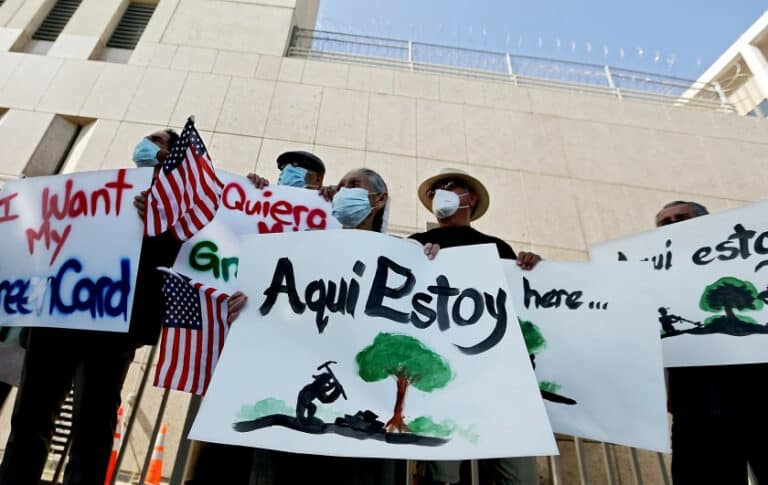Per the LA Times, an Automatic Data Processing report released this week shows that companies in the private sector accelerated their hiring in December 2015, finishing out the year strong by adding 257,000 new jobs. This figure, which exceeded even analysts’ projections, is up from the 211,000 positions created in November and constitutes the largest monthly increase since December 2014. A broader jobs report assessing both private and public employment is scheduled to be released today by the Department of Labor. While some economists expected the report to show slowed job growth (around 200,000), this ADP data may indicate otherwise.
This lines up with the Labor Department report released yesterday showing that the number of Americans who are filing for unemployment benefits has continued to decrease. Initial claims dropped 10,000 to 277,000 for the week ending January 2, and the 4-week average dropped 1,250 to 275,750. Some economists are optimistic that this is a signal of healthy labor markets — we’ll know more after the monthly federal employment report is released today.
Retail employees may be facing uncertain fates after a slumping holiday season. The New York Times reports that Macy’s has announced a plan to restructure its operations, which will result in the elimination of 3% of its workforce (approximately 4,500 jobs — 3,000 store employees, 165 senior execs, and 650 back-office jobs). Macy’s attributes its declines in sales to the unseasonably warm weather experienced across the country this winter that kept demand for winter clothes low. The retailer has also confirmed that it will be closing 36 stores in the U.S.
AIG will seek to reduce on-the-job accidents in hazardous environments by using wearable tracking devices to monitor the movements of its employees. According to the Wall Street Journal, the company has invested an undisclosed sum into Human Condition Safety, a maker of such devices. The plan is to install the devices into employees’ vests at factories, construction sites, and other risky workplaces, enabling the transmission of data regarding workers’ movements in real time. The insurer’s investment is part of a broader movement to use sophisticated data to cut costs on what is currently a $90 billion dollar workers’ compensation industry.
Finally, a piece in the New York Times highlights the most recent developments in the paid family leave area. In the wake of Mayor De Blasio’s executive order giving 20,000 NY city employees 6 weeks paid leave after birth/adoption, a group of New York state senators reportedly plans to introduce legislation that would give employees 12 weeks of paid leave and Goveror Cuomo (also of NY) is considering similar legislation. Many feel that these efforts don’t go nearly far enough in addressing the actual needs of families – especially since many of these post-birth/adoption policies leave out those who need time to care for sick family members or even their own health issues.
Nationally, some presidential candidates are making paid family leave a campaign issue. However, federal legislation remains unlikely. Although a handful of congressional representatives have proposed the Family Act, which would provide for paid family leave, the proposed legislation (and the analogous counterparts that preceded it) seems to have made little to no progress toward becoming a reality. For this reason, state and local law will likely be the most important tool for policymakers looking to provide employees with paid family or sick leave in the U.S. – the only industrialized country that has declined to do so.






Daily News & Commentary
Start your day with our roundup of the latest labor developments. See all
July 2
Block, Nanda, and Nayak argue that the NLRA is under attack, harming democracy; the EEOC files a motion to dismiss a lawsuit brought by former EEOC Commissioner Jocelyn Samuels; and SEIU Local 1000 strikes an agreement with the State of California to delay the state's return-to-office executive order for state workers.
July 1
In today’s news and commentary, the Department of Labor proposes to roll back minimum wage and overtime protections for home care workers, a federal judge dismissed a lawsuit by public defenders over a union’s Gaza statements, and Philadelphia’s largest municipal union is on strike for first time in nearly 40 years. On Monday, the U.S. […]
June 30
Antidiscrimination scholars question McDonnell Douglas, George Washington University Hospital bargained in bad faith, and NY regulators defend LPA dispensary law.
June 29
In today’s news and commentary, Trump v. CASA restricts nationwide injunctions, a preliminary injunction continues to stop DOL from shutting down Job Corps, and the minimum wage is set to rise in multiple cities and states. On Friday, the Supreme Court held in Trump v. CASA that universal injunctions “likely exceed the equitable authority that […]
June 27
Labor's role in Zohran Mamdani's victory; DHS funding amendment aims to expand guest worker programs; COSELL submission deadline rapidly approaching
June 26
A district judge issues a preliminary injunction blocking agencies from implementing Trump’s executive order eliminating collective bargaining for federal workers; workers organize for the reinstatement of two doctors who were put on administrative leave after union activity; and Lamont vetoes unemployment benefits for striking workers.